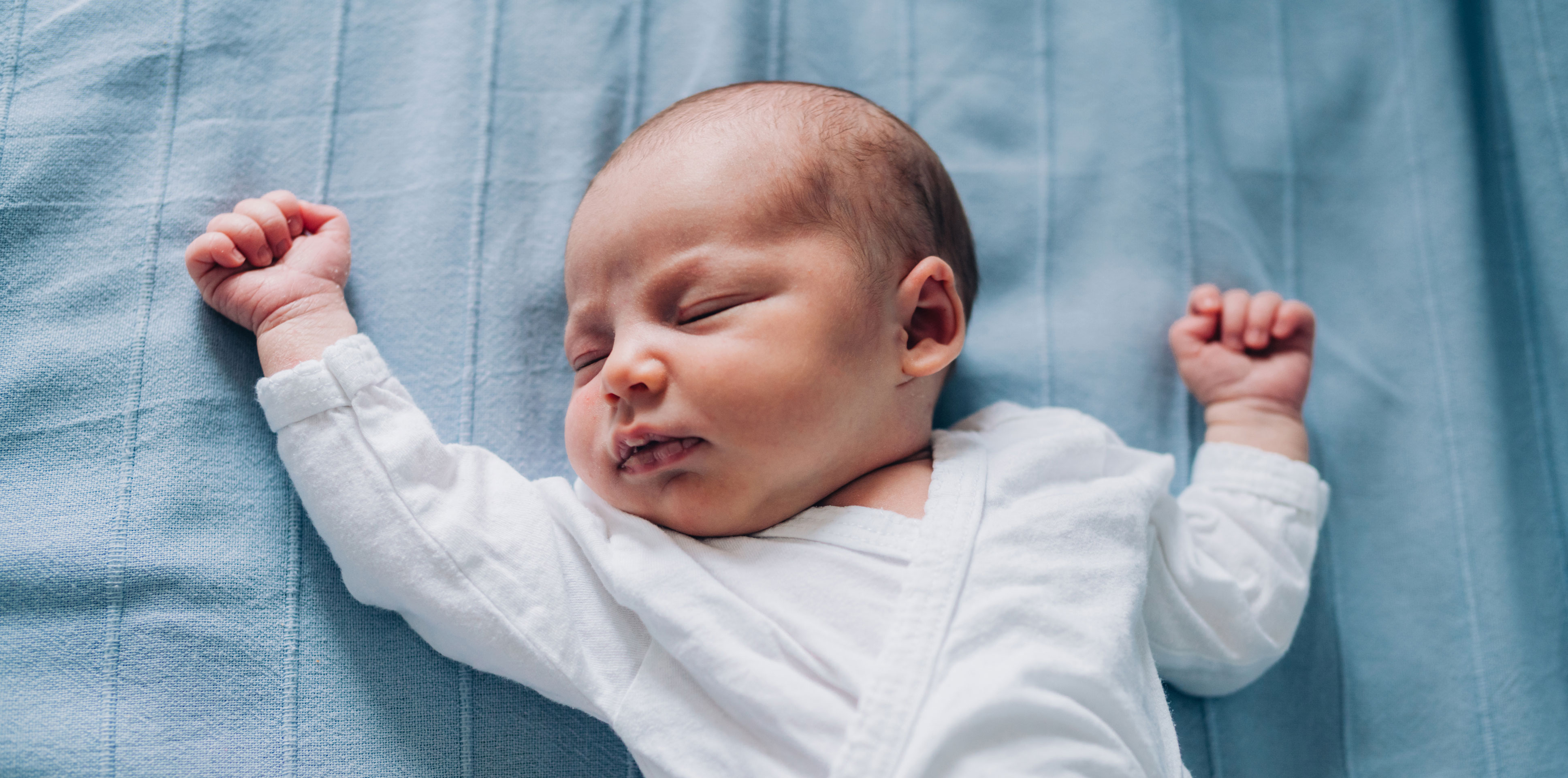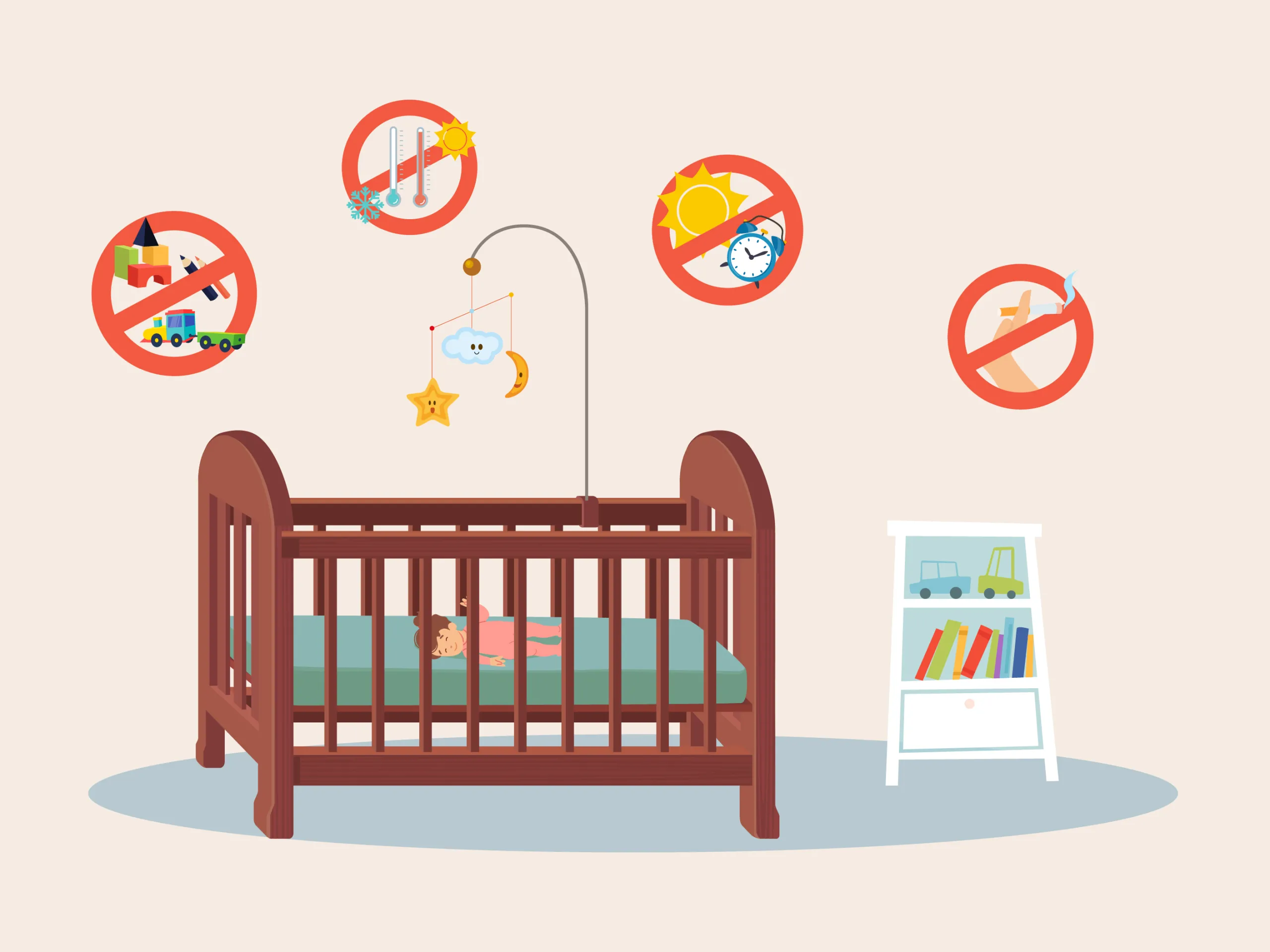Safe sleeping environment
How parents of infants ensure a safe sleep
How blissful babies look when they sleep peacefully! But does your infant really sleep well? Especially in the first months of life, a safe sleeping environment is very important, for example, to prevent Sudden Infant Death Syndrome. But other health problems can also be avoided through sensible prevention. Read what you can do to help your child sleep healthily.

Understanding breath sounds
Is your infant sleeping quietly, snoring, panting or almost not noticeable at all? It's all normal. Babies breathe mostly through their nose for the first six months. Mouth breathing develops only gradually.
If you are unsure whether your infant is breathing properly, you can put your hand on his chest and feel how the little chest moves up and down. To do this, you can go to the nose and mouth with your cheek or the back of your hand and feel if you can feel the breeze from the breath, in addition to listening to see if you hear any breathing sounds.
.
Experts assume that various factors come together that can cause respiratory arrest. Very often, affected babies could not breathe freely through the nose. A prone position can be responsible for this. But also overheating by too warm clothes or too strongly heated rooms are considered risk factors, as well as smoking in the home.
In the following we describe measures with which you can prevent the danger of Sudden Infant Death Syndrome:
.10 recommendations for safe and healthy baby sleep
In the first months of life, babies spend up to 19 hours a day sleeping. Parents can avoid dangers when sleeping in the baby's bed if they follow a few rules.
-

-
Supine position
The supine position is recommended for a safe sleep. Lying on his back, your baby can breathe freely.
-
Stable base
Use an air-permeable, firm mattress in the baby's crib. Underpads that make your infant sink in are unsuitable, as they can thus hinder breathing.
-
Choking risk pillow
Your baby does not need a pillow in the first months. This poses a risk of suffocation, so you should definitely do without it.
-
Use sleeping bag
Use a baby sleeping bag instead of a pillow and comforter. This way, there is no risk of it slipping under the covers. Also, with the sleeping bag, it can not get loose at night or get cold.
-
Renunciation of cuddly toys
Refrain from using cuddly toys, blankets, sheepskin or nests in the baby's bed for the first few months. Anything that could hinder breathing should be avoided.
-

-
No small parts
Do not leave cords or small parts that can be swallowed in the baby's crib.
-
Pleasant room temperature
Avoid overheating: A normal room temperature of about 17 to 18 degrees and light pajamas are quite sufficient in the sleeping bag. Check whether your baby is sweating and dress him lighter if necessary.
-
Distance from heat sources
The baby crib should not be placed in the sun or next to a heater, because there is also a risk of overheating.
-
Baby crib instead of parents bed
Studies have shown: The baby sleeps safer in its own crib than in the parents' bed. Place the baby crib next to the parent's bed during the first few months, so you still have it close to you.
-
Refrain from smoking
Do not smoke in the living quarters. Smoking is also considered a serious health risk for babies in connection with Sudden Infant Death Syndrome.
Attention: Falling asleep with a child is particularly dangerous!
Never sleep with your baby on sofas, armchairs or pillows. It is especially dangerous if you fall asleep with your child in your arms from sheer fatigue. If your baby lies with his or her stomach on your chest, the risk of Sudden Infant Death Syndrome or suffocation increases. If you feel you are so tired that you are about to fall asleep, you should put your child in his or her basket or crib.
Resuscitation if your infant is breathing irregularly or not at all
If you notice irregular breathing in your child or if there is a respiratory arrest, you should immediately call the emergency services on 112. As a parent, it is important to know how to perform resuscitation in such an emergency.
The German Red Cross offers first aid courses for children's emergencies aimed at parents, grandparents and interested parties. These courses provide insight into first aid for your child in this exceptional situation, so that you can act prudently and correctly in an emergency.
Online information on cardiopulmonary resuscitation for infants and young children can be found on the German Red Cross Internet portal.
In the video, the University Hospital of Bonn explains step by step the correct procedures for resuscitation in infants and children to bridge the time until the arrival of the emergency services.
Where to find help and advice?
If your child is having sleep problems, you have questions about a safe sleep environment, or you're worried, talk to your pediatrician's office.
The pediatricians and adolescents on the web provide online information about preventive care and tips for first aid in emergency situations.
The Gemeinsame Elterninitiative Plötzlicher Säuglingstod e.V.(GEPS) offers affected parents help in coping with grief and in subsequent pregnancies.
The GEPS also organizes and arranges infant resuscitation courses and hosts parent meetings. Informational materials and recommendations for prevention are available for free download. There is also an opportunity through this parent initiative to exchange ideas with others on this topic in the free GEPS discussion forum. All you need to do is register on the site.



